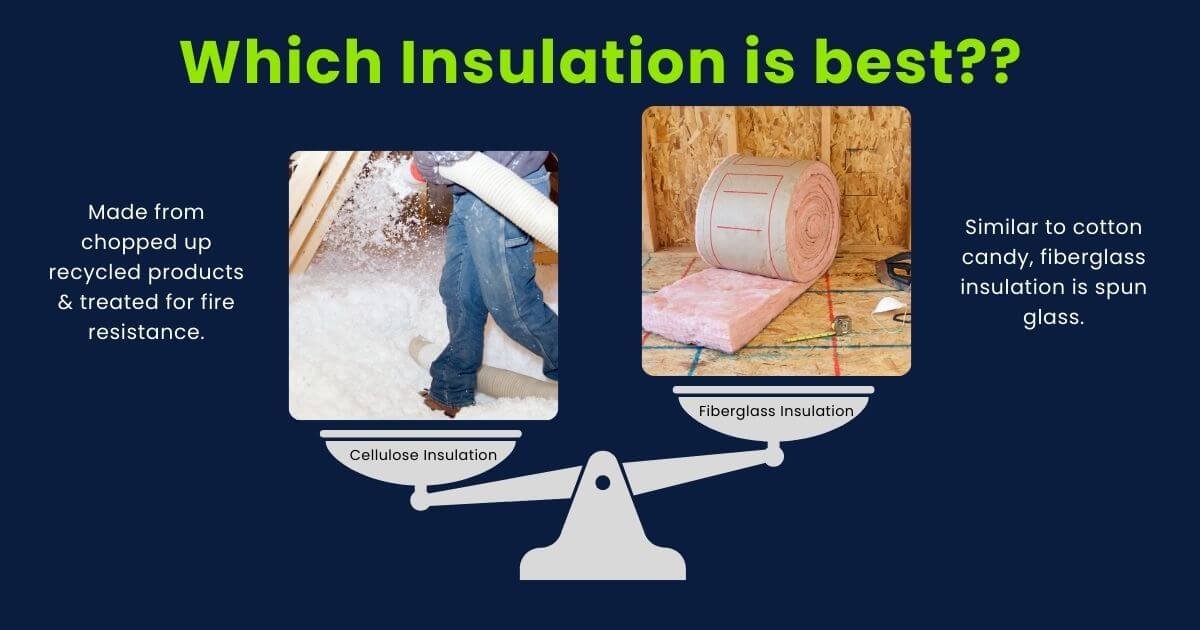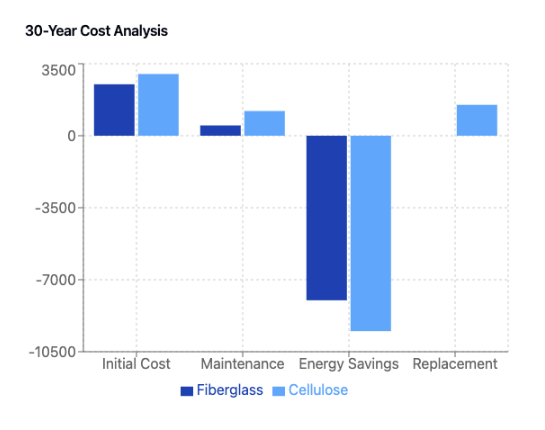Fiberglass vs Cellulose Insulation: Which is Best for Your Home?
Tired of high heating and cooling costs? Looking at your existing insulation and wondering if it's time for an upgrade? You're in the right place! Let's dive into everything you need to know about fiberglass insulation and cellulose insulation - the two heavy hitters in home insulation.
What is Fiberglass Insulation? Your Complete Guide
Remember those cotton candy machines at the fair? Fiberglass insulation works similarly, but instead of sugar, Owens Corning and other manufacturers spin molten glass into ultra-fine fibers. These fibers trap pockets of air, creating an effective barrier in your walls, attics, and floors.
Key Features of Fiberglass Insulation: Think of fiberglass insulation as your home's protective shield. Here's what makes it such a popular choice among homeowners and contractors alike:
Available as fiberglass batts or loose fill insulation
Perfect for wall cavities and attic spaces
Excellent thermal performance in maintaining your building envelope
Helps in lowering heating and cooling costs by up to 40%
The History Behind Your Walls
Here's a fun fact: while glass fibers have been around for centuries, modern fiberglass insulation didn't exist until 1932. Owens Corning revolutionized the industry by introducing fiberglass insulation in the 1930s. Today, you'll find Owens Corning fiberglass in millions of homes, with good reason!
Understanding Cellulose Insulation: The Green Alternative
While fiberglass has its place, cellulose insulation offers one alternative worth considering. Made from recycled newspapers and treated with boric acid for fire resistance, loose fill cellulose insulation brings its own set of advantages to the table.
This detailed chart compares the key properties of different insulation materials:
Material composition
R value per inch
Fire resistance ratings
Sound reduction coefficients
Moisture resistance levels
Cellulose Insulation Benefits:
Superior sound reduction capabilities
Excellent for blown insulation applications
Higher R value per inch compared to some fiberglass options
Fire resistant thanks to borate treatment
The Ultimate Showdown: Benefits and Drawbacks
Fiberglass Insulation Advantages
When it comes to tried-and-true performance, fiberglass insulation has earned its reputation through decades of reliable service. From Owens Corning innovations to modern manufacturing techniques, here's why so many homeowners and contractors choose fiberglass:
Long-lasting performance in walls and attics
Resistant to mold and moisture
Excellent for new construction
Trusted by contractors nationwide
Perfect for insulating around ducts and pipes
Cellulose Insulation Edge
While fiberglass might be the traditional choice, cellulose insulation has carved out its own niche in the market, especially for existing homes. This eco-friendly option brings some unique strengths to the table that might make it perfect for your specific needs:
Excellent for existing insulation retrofits
Superior sound dampening
Great for irregular wall cavities
Ideal for residential structures
Better at blocking air movement
Installation Matters: Safety First!
Whether you're dealing with fiberglass batts or loose fill cellulose, proper installation makes all the difference. Here's what you need to know:
Fiberglass Installation Safety: Before you even think about handling fiberglass insulation, let's talk safety. This material requires careful handling to ensure a smooth, problem-free installation:
Wear proper safety gear
Keep skin covered
Use respiratory protection
Avoid disturbing existing insulation unnecessarily
Cellulose Installation Notes: When it comes to cellulose insulation, professional installation makes all the difference. Here's what experienced contractors know about getting it right:
Professional blown insulation recommended
Proper thickness matters for optimal R value
Special attention to moisture barriers
Careful around electrical fixtures
Types of Insulation: Breaking it Down
Fiberglass Options
Not all fiberglass insulation is created equal. Owens Corning and other manufacturers offer several varieties to match your specific needs:
Standard fiberglass batts
Loose fill fiberglass insulation
Faced or unfaced options
Various R value choices
Cellulose Varieties
Cellulose insulation has evolved significantly over the years, with different formulations for specific applications. Here's what's available in today's market:
Dense-packed cellulose for walls
Loose fill cellulose for attics
Stabilized cellulose for special applications
Spray-applied options
Environmental Impact and Sustainability
Let's talk green! Both materials have their environmental merits:
Fiberglass Environmental Impact: When we talk about environmental responsibility, fiberglass insulation might surprise you with its green credentials. Here's how it helps protect both your home and the planet:
Partially made from recycled glass
Reduces energy consumption
Lasts for decades in your walls and ceilings
Recyclable at end of life
Cellulose Environmental Benefits: If environmental impact is high on your priority list, cellulose insulation deserves special attention. This eco-friendly option transforms everyday waste into effective insulation:
Made from recycled newspapers and cardboard
Less manufacturing energy required
Excellent for energy efficiency
Keeps paper out of landfills
Cost and ROI: The Bottom Line
When it comes to heating and cooling costs, both insulation types deliver:
This chart breaks down the 30-year cost comparison between fiberglass insulation and cellulose insulation, including:
Initial installation costs
Maintenance requirements
Energy savings over time
Replacement needs
Fiberglass Investment:
Lower initial material cost
Consistent R value over time
Excellent thermal performance
Minimal maintenance needed
Cellulose Costs:
Competitive material pricing
Superior air sealing properties
May need occasional top-offs
Great energy savings
This graph shows the average energy savings over a 10-year period with different types of insulation, comparing:
Standard fiberglass batts
Loose fill cellulose insulation
Existing insulation baseline
Combined solutions
Making Your Choice: What's Right for Your Home?
Consider these factors when choosing between fiberglass insulation and cellulose insulation:
Your existing insulation situation
Local climate conditions
Installation method preferences
Budget constraints
Environmental priorities
Ready to Upgrade Your Insulation?
Whether you choose fiberglass batts, loose fill cellulose insulation, or a combination of both, proper installation is key. At Argyle Bros Insulation, we're experts in both materials and can help you make the right choice for your home.
Want to learn more about lowering heating and cooling costs with proper insulation? Give us a call - we'll help you navigate all the options, from Owens Corning products to the latest in cellulose technology!




